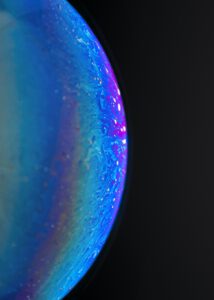
Dissonance Effect | People believe what they want to believe
Dissonance Effect | People believe what they want to believe „People believe, what they want
Your brain is a master in processing information. But most information can only be processed subconsciously. This means that when we have to make a decision, we are not able to make it based on just cognitive, analytical thinking. Emotions need to help us. Emotions tell us subconsciously which decision we should make based on past experiences.
The “Somatic Marker Hypothesis” by Bechara and Damasio 2005; Damasio et al., 1991 suggest that our decision-making process is heavily influenced and controlled by emotions. The so-called biomarkers label all possible decisions.
At the end of the 20th century, Antoine Bechara encountered a patient who had had a tumour in the area of the ventromedial prefrontal cortex at the age of 35. The patient was an intelligent and creative man with a social life. After the damage to the bespoken area, he was no longer able to go through the day by himself. Simple decisions such as the restaurant for the evening or the question of which clothes to wear for the day were almost impossible. His social ability also suffered from this damage.
Bechara came up with the hypothesis that the ventromedial prefrontal cortex, which plays a critical role in the decision-making process, is responsible to process and decode biomarkers to filter possible decisions.
His hypothesis tries to neurologically explain that the decision-making process is mostly subconsciously driven by our emotions that are linked to past experiences.
As brand strategists, we should pay attention that we build a brand that is capable of evoking emotions, as brand managers we have to do everything in our power to create emotions. Emotions can be created in various ways. Telling a compelling story to the consumer through a campaign can reactivate emotions of past experiences and link them with the campaign of the company. We can create emotions by telling a story that builds up empathy, an emotion that is not based on past experiences but on specific characteristics of the story that connect with the consumer in a certain way. We can build positive emotion by providing the consumer with a little challenge he then solves. This creates a feeling of pride and smartness and then he may go on and also tells his friends about it.
But what is most important, emotions connect us with other beings. Therefore humans are the most natural and efficient way to create them. Sure, in a campaign there are photographs of other people but that is not a replacement for personal contact.
By creating events, workshops or by just having the nice staff in town, they will connect in a way stronger way, that traditional advertisement could never do. Hosting an event with free drinks and food with nice music can create a social group effect which is a physical and local experience with like-minded people. This would be a physical experience of a brand tribe, the brand’s peer group so to speak.
I believe that just if you have truly understood the mechanisms of such concepts, you are capable of navigating in the dark. It is just then that you are able to adapt to non-predictable factors.

Dissonance Effect | People believe what they want to believe „People believe, what they want

Markensympathie zu erwecken ist ein wichtiger Aspekt um Kunden zu gewinnen und zu binden.

Social Media ist eine Liga für sich Social Media funktioniert nach anderen Regeln als normale
Get notified about new articles.
I will not spam you, I promise.